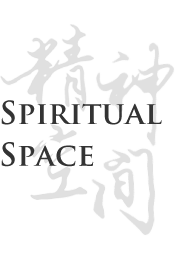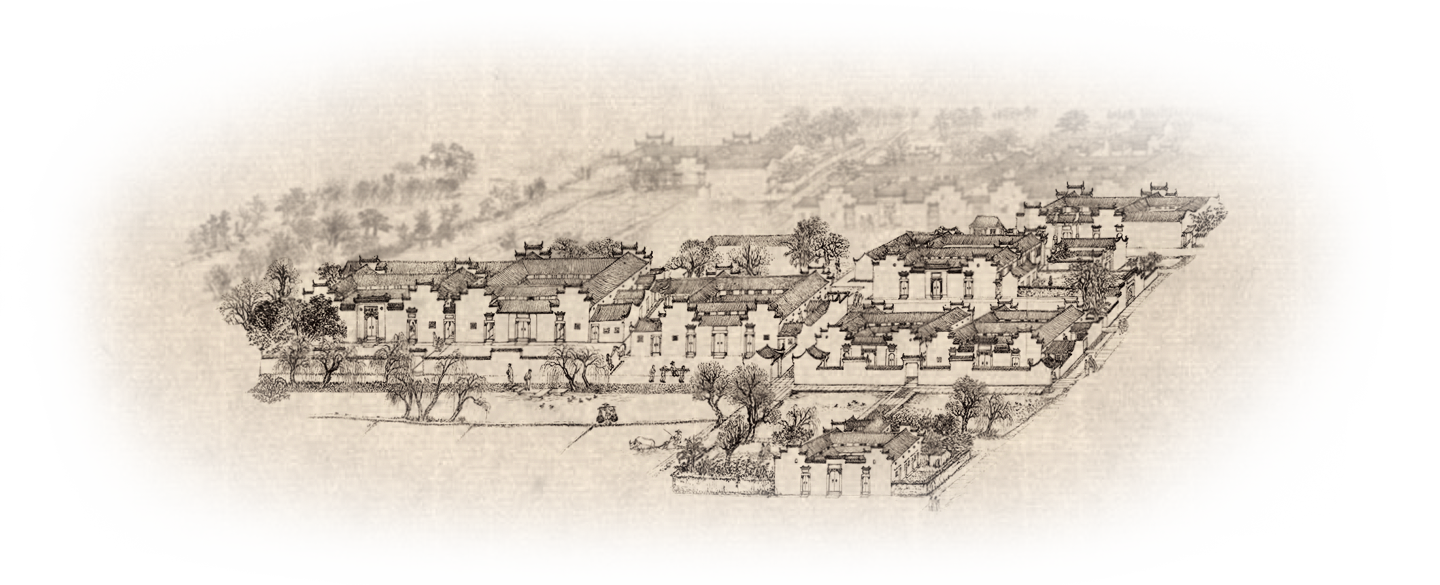The residential buildings in Gaoqian not only have the function of housing, but also carry the spiritual beliefs of people. The well-arranged residential buildings are not only the living space of local residents since ancient times, but also the space of their beliefs passed down from generation to generation.
In traditional society, the spiritual life of Gaoqian people mainly consists of two parts: religious beliefs and folk beliefs. Religious belief refers to the belief in institutionalized religions such as Buddhism and Taoism. Folk beliefs, on the other hand, refer to the people's spontaneous belief in supernatural powers, including but not limited to pantheism, primitive religion and ancestor worship.
Gao Qian's religious beliefs are mainly in Buddhism. Taoism, on the other hand, is less institutionalized, often mixed with folk beliefs and less independent. Among the existing buildings in Gaoqian village, there is one ancient temple. Fushou Temple is one of the eight temples that Buddhist followers in Gaoqian worship on the first day of the first month every lunar year, while the other seven temples are in neighboring villages. In the era when there was no modern transportation, it was very hard to worship all 8 temples in one day, which required getting up early and going through the dark. But one person worshipping all of them can benefit the whole family, which is a cost-effective thing. Therefore, there is also the alternative method of hiring someone to carry a palanquin to worship the temple. But one needs to worship even ten years in successive, of which eight years of merit to their own, two years of merit to the palanquin bearer. All engaged has a share, either the old or the young. This custom gradually reduced until the outbreak of the anti-Japanese war. After the eastablishment of New China, it completely disappeared.
There is an ancient pagoda in the southernmost part of the village, named Baotong Pagoda. The pagoda is located in a high pier in the north field of the village, there are only three words “Baotong Pagoda” on the pagoda. The construction history is unknown. It has a history of about 800 years. The pagoda is a stone structure, with four layers and five sides. From the first to the third layer, it is five prismatic. The top of the fourth layer is gourd-shaped. The pagoda is not an inherent architectural form in China, but a typical Buddhist architecture, introduced from ancient India, but gradually evolved into a secular architecture in China. The intention to construct the pagoda is of distinct Chinese characteristics. Before the advent of modern medical and health technology, children died at a very high rate. According to local custom, children under the age of 10 were not buried in coffins or in the ground, but in the pagoda. The bottom side of the pagoda from lower part to upper part is 1.7 meters, 1.5 meters and 1.3 meters, which is converted into the Luban (the ancient master of carpenter) Ruler, 6.1 chi, 5.4 chi and 4.7 chi, each layer is 7 cun less than the lower layer. Some people believe that this is because at that time, many newborns died due to “seven days of wind” (i.e. neonatal tetanus), and each layer of the pagoda bottom was reduced by 7 cun in turn, in the hope that the number of babies suffering from seven days of wind gradually decreased. This idea of linking religious architecture with the expectations of daily life is representative of the pragmatic faith world of the people of Gaoqian.
In the faith of the Gaoqian people, perhaps religion is only an external decoration and embellishment, while ancestor worship is the inner and lasting keynote. In terms of architecture, the ancestral halls based on ancestor worship are much larger in number and scale than religious buildings such as temples. Two ancient ancestral halls exist in Gaoqian Village. There are 8 historically available ancestral halls of various sizes, including the grand ancestral hall of the Xianju Wu family, located in the northern village of Gaoqian, which is the spiritual center of the Xianju Wu family, with a lineage covering 50 surrounding villages. In addition, the ancestral halls whose buildings still exist include the small clan ancestral hall of the Wu family and the Baiyan and Yinyan ancestral halls of the lower house. The main hall of Shangli Ancestral Hall, which was once the site of Gaoqian Elementary School, still exists. The ancestral hall of memorial archiway, the small ancestral hall, and the new ancestral hall are no longer extant.
Gaoqian people have two ancestral rituals a year. One is at the Qingming Festival, which is combined with tomb sweeping, and the other is at the winter solstice, which is held in the ancestral hall. For the winter solstice, a whole pig and a whole sheep are prepared, which is the same as “Shaolao”, the ancient sacrificial offerings used by the vassals (the emperor uses ox, pig, and sheep as offerings which is called Tailao). The ritual is a serious ritual activity, and the participants must be the sons of the clan, the head of each house and those who have scholarly honors or official ranks. The ritual procedure includes: the main priest taking his place - incense - offering - bowing - reading the ritual text and the ancestors' roster --Rising --Playing music --End of ceremony. Among them, the ancestors in the ancestral roster mainly refer to those who have served as officials in the past generations. The distribution of offerings after the ancestral ceremony also follows the principle of honoring the old and rewarding the learned. Those who have scholarly honors or official ranks can get more. After the eastablishment of New China, this system was abolished when the family property was redistributed.











